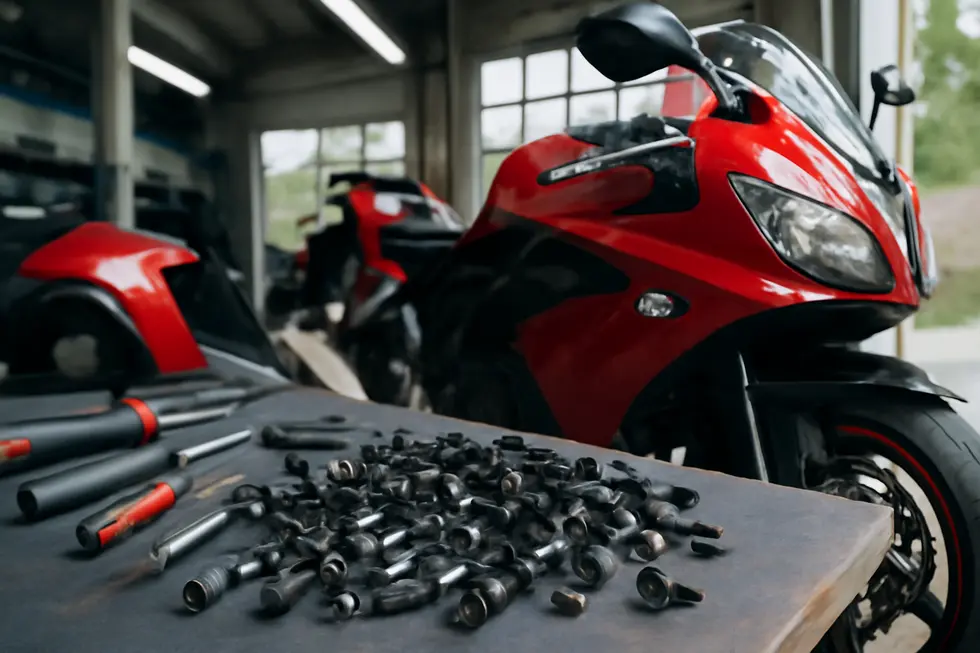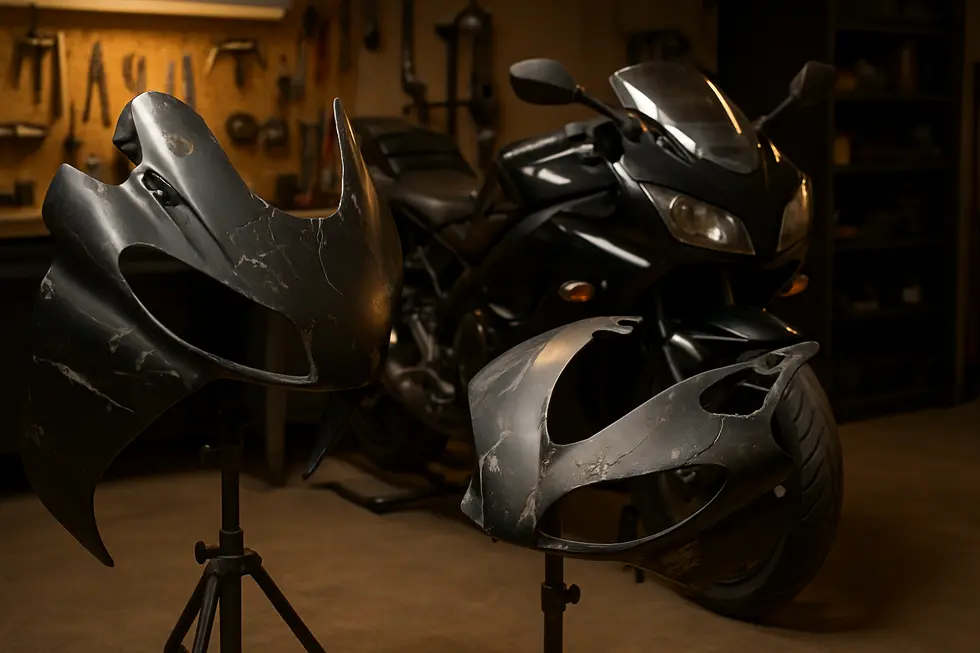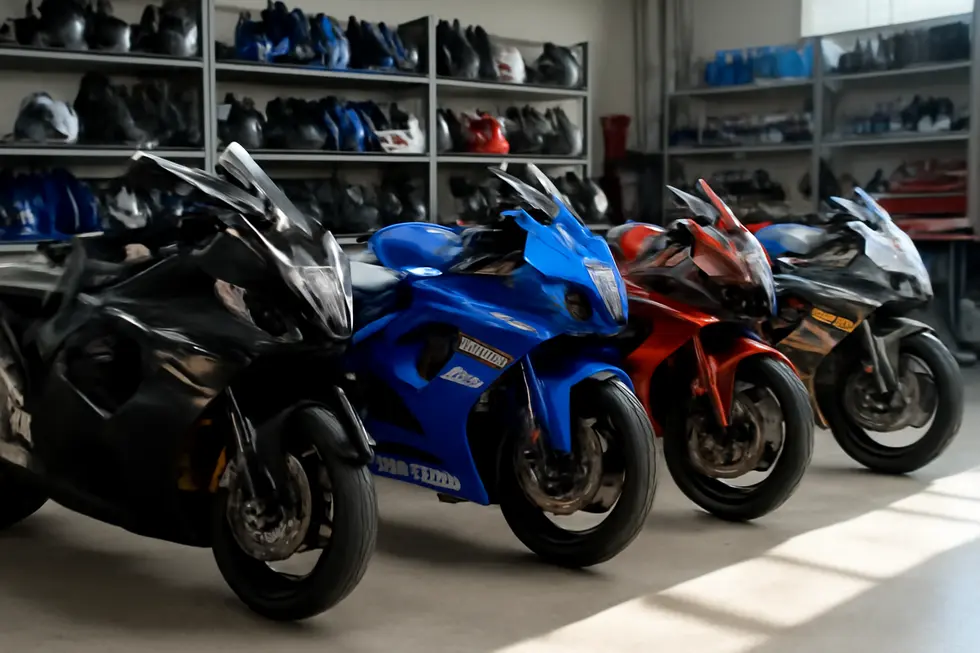Maximizing Motorcycle Efficiency and Protection with Belly Fairings
September 12, 2025 | by summitfairings
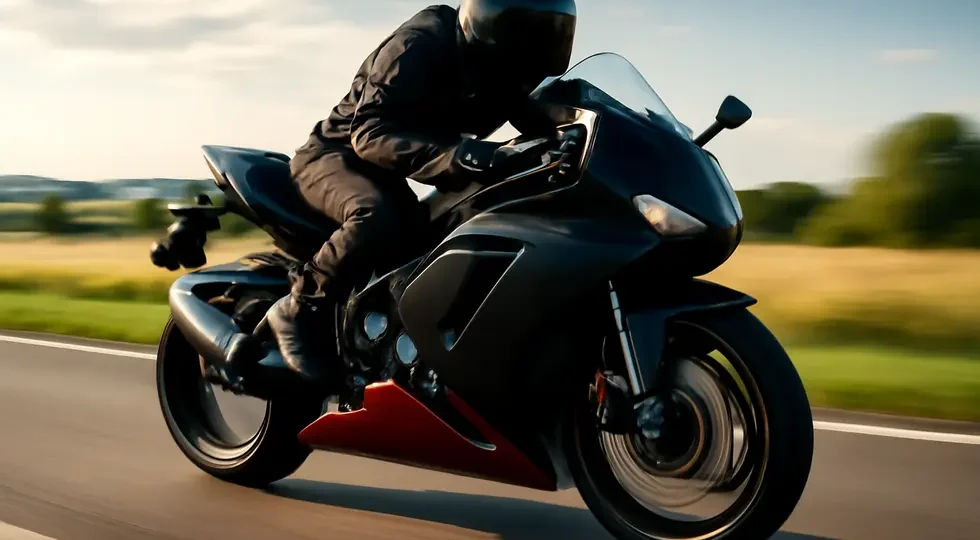
Introduction
Belly fairings are an essential yet often overlooked component in modern motorcycle design, providing critical benefits that span aerodynamics, protection, material innovation, installation ease, commercial variety, and styling appeal. For business owners looking to enhance product offerings or expand aftermarket services, understanding the multifaceted advantages of belly fairings is paramount. The aerodynamic impact boosts performance and stability; protective functions safeguard the engine’s delicate parts from debris and damage; material technologies like carbon fiber ensure durability with lightweight strength; straightforward installation increases market accessibility; available market-specific examples highlight product practicality; and aesthetic refinements increase consumer appeal. Together, these aspects position belly fairings as a key value driver in motorcycle design and aftermarket customization.
Tables of Contents
Chapter 1: Aerodynamics and Performance Impact of Belly Fairing Motorcycle Designs
- Innovations Driving Aerodynamics and Stability in Modern Belly Fairings
- Economic and Societal Benefits of Enhanced Aerodynamics in Belly Fairing Motorcycles
Chapter 2: Protective Functions of Belly Fairing on Motorcycles
- How Belly Fairings Shield Motorcycles from Impact and Road Debris
- Enhancing Safety Through Leak Containment and Structural Protection in Belly Fairings
Chapter 3: Material Technology Used in Belly Fairing Motorcycles
- Balancing Strength and Flexibility: Carbon Fiber and ABS Plastic in Belly Fairings
- Titanium Fasteners: Lightweight Strength Enhancing Belly Fairing Durability and Performance
Chapter 4: Installation and Compatibility of Belly Fairing Motorcycle Components
- Seamless Integration: Step-by-Step Installation and Ensuring Hardware Compatibility for Belly Fairings
- Ensuring Perfect Fit: Model-Specific Compatibility and Manufacturer Guidance for Belly Fairing Installation
Chapter 5: Commercial Examples and Model Specifics of Belly Fairing Motorcycles
- Cutting-Edge Designs and Engineering Highlights in Belly Fairing Motorcycles
- Balancing Performance and Market Value: Economic and Racing Roles of Belly Fairings
Chapter 6: Aesthetic and Styling Considerations for Belly Fairing Motorcycles
- Crafting Speed and Style: How Belly Fairings Enhance Aerodynamics and Performance Aesthetics
- The Art of Material Selection and Customization in Belly Fairing Motorcycle Styling
Chapter 1: Aerodynamics and Performance Impact of Belly Fairing Motorcycle Designs
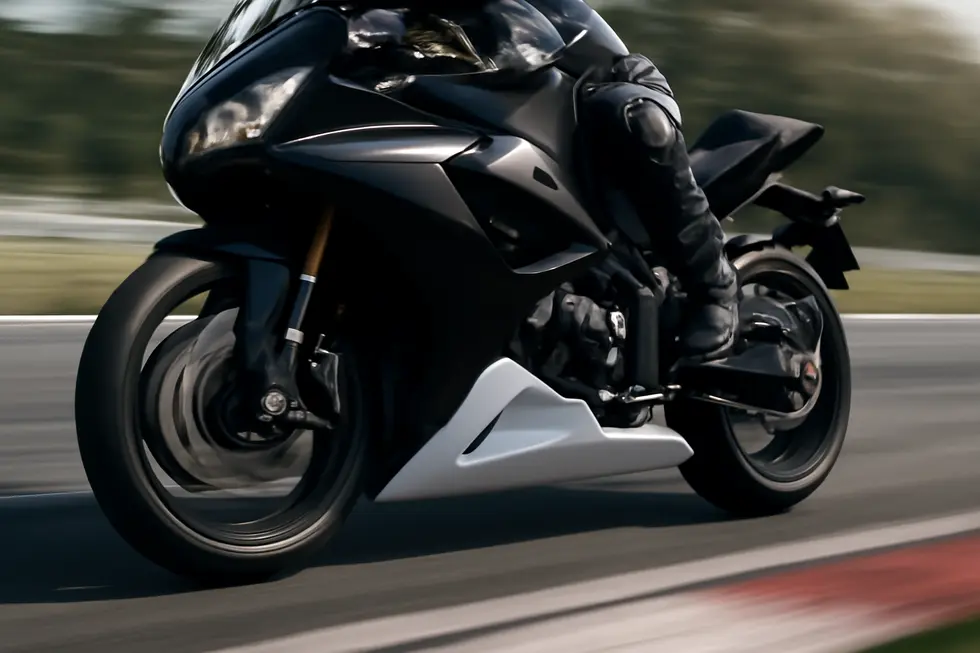
1. Innovations Driving Aerodynamics and Stability in Modern Belly Fairings
Technological advancements in belly fairing designs have significantly enhanced motorcycle aerodynamics and overall performance. Positioned beneath the engine, belly fairings smooth the airflow under the bike, reducing drag and turbulence that can destabilize high-speed riding. Modern designs achieve this through fluid, aerodynamic shaping tailored to each motorcycle model, ensuring seamless integration with the existing bodywork. By optimizing airflow, they contribute not only to higher top speeds but also to improved fuel efficiency, a direct benefit in both competitive and casual riding environments.
The evolution of materials has played a pivotal role in this progress. Lightweight composites such as carbon fiber are now commonly used, offering an excellent balance of strength, heat resistance, and weight reduction. This material choice enhances handling by lowering the motorcycle’s overall weight, enabling quicker acceleration and more responsive cornering. Carbon fiber panels also withstand road debris and heat exposure better than traditional plastics, extending the fairing’s durability and protective function.
Beyond basic aerodynamic smoothing, new belly fairings integrate advanced downforce aids, including spoilers and winglets initially developed for motorsport applications. These elements increase tire contact on the road, stabilizing the bike and improving grip during aggressive cornering and rapid acceleration or braking. The careful tuning of these features, often validated through wind tunnel testing, balances aerodynamic efficiency with the motorcycle’s visual appeal, avoiding excessive bulk while maximizing functional gains.
In high-performance models inspired by racing technology, electronic controls can work in harmony with aerodynamic components to further enhance stability at varying speeds, although such innovations come with greater engineering complexity and cost.
Together, these innovations ensure that contemporary belly fairings do more than protect; they are crucial contributors to a motorcycle’s dynamic performance profile. For riders seeking improvements in speed, fuel economy, and handling precision, embracing these aerodynamic and material advancements provides tangible benefits. For more insights into aftermarket fairing options that balance style and function, explore Summit Fairings’ extensive selection.
Learn more about how aerodynamic principles shape modern motorcycle fairing designs in this detailed overview: https://www.youtube.com/watch?v=MHhiBg-Pp4g
2. Economic and Societal Benefits of Enhanced Aerodynamics in Belly Fairing Motorcycles
Motorcycle belly fairings offer more than just aerodynamic finesse; they have meaningful economic and societal ramifications that echo beyond the racetrack. By refining airflow under the motorcycle, these fairings reduce drag and improve stability, which directly translates into better fuel efficiency. This efficiency lowers fuel expenses for riders, akin to aerodynamic advancements in commercial vehicles that have historically cut operational costs. Over time, savings accumulate—making riding not just thrilling but also more budget-conscious.
Protection is another economic advantage. By shielding engine components from debris and minor impacts, belly fairings help prevent costly repairs. Extending the life of key mechanical parts reduces maintenance frequency, supporting long-term durability and value retention. Because belly fairings often boost a motorcycle’s aesthetic appeal, they can increase resale value or stimulate demand in the customization market, driving economic activity within aftermarket industries.
On a societal level, fuel savings contribute to lower emissions per mile, helping reduce the environmental footprint of motorcycling. Enhanced stability through aerodynamic improvements also increases rider safety, potentially reducing accidents and their broader social costs. Culturally, belly fairings influence motorcycle identity by creating sleek, aggressive designs favored in sport and racing circles. This stylistic impact shapes public perceptions, positioning motorcycles as technologically advanced and performance-oriented machines.
Together, these factors show how aerodynamic innovations in belly fairing designs integrate economic efficiency, environmental consciousness, enhanced safety, and cultural expression. Their adoption reflects a broader trend where design enhancements serve multiple practical and societal purposes simultaneously.
For more insights on how fairings impact styling and performance, explore the Summit Fairings blog. Additionally, a detailed explanation of belly fairings and their benefits can be found in the Ride or Die Motorcycles video.
Chapter 2: Protective Functions of Belly Fairing on Motorcycles
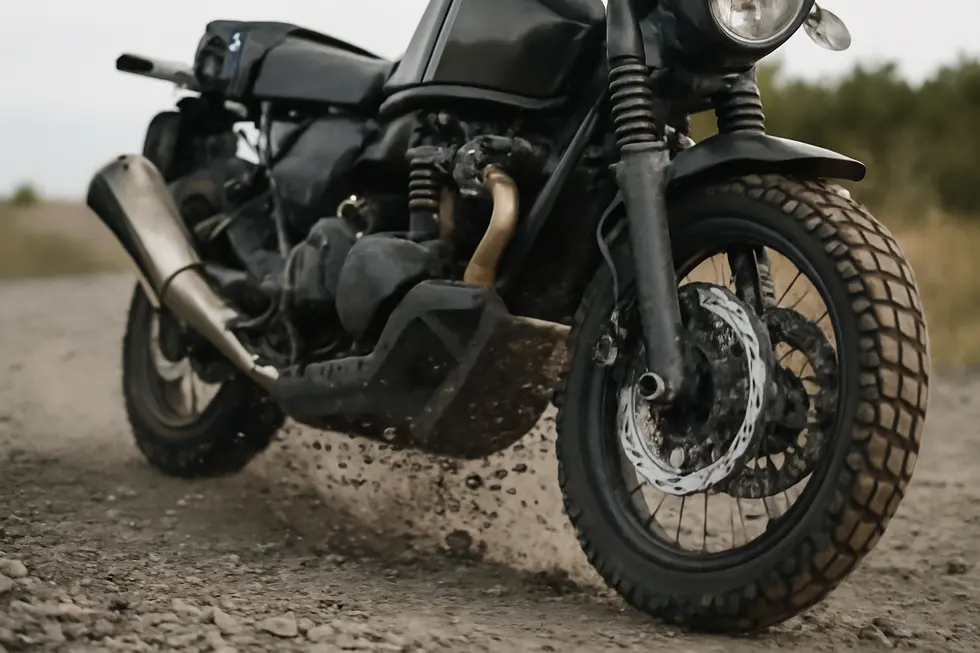
1. How Belly Fairings Shield Motorcycles from Impact and Road Debris
The belly fairing on a motorcycle serves as a crucial defender against impacts and road debris, safeguarding essential lower components such as the engine and electrical systems. Positioned beneath the engine, this panel acts as a barrier that intercepts stones, dirt, and other hazards that would otherwise strike vulnerable parts during riding. This protection minimizes the risk of mechanical damage and keeps vital systems functioning reliably.
In addition to physical shielding, the belly fairing helps contain fluids like oil or coolant if leaks occur, reducing secondary hazards that might cause accidents by slippery spills. Its ability to absorb minor impacts from uneven surfaces and obstructions means that repair costs for critical engine elements can be significantly lowered. These defensive qualities contribute not only to durability but also to overall rider safety across various road conditions.
Materials selected for belly fairings strike a balance between strength and weight. Carbon fiber and reinforced plastics offer robust resistance to wear and impact without adding significant mass, preserving the motorcycle’s performance and handling. This lightweight toughness enables the belly fairing to endure frequent encounters with debris and minor crashes, which commonly occur during everyday use.
By integrating impact protection with aerodynamic design, the belly fairing enhances stability at high speeds, indirectly lowering risks that come from sudden instability or control loss. Riders benefit from improved confidence, knowing that both the protective and performance aspects of the motorcycle are optimized.
For further insights and a visual overview of how belly pans function, the Ride or Die Motorcycles video offers an excellent resource. To explore a variety of motorcycle fairing options that combine protection and style, visit this comprehensive motorcycle fairings blog.
2. Enhancing Safety Through Leak Containment and Structural Protection in Belly Fairings
The belly fairing on a motorcycle serves as a vital safeguard beneath the engine, primarily acting as a containment barrier for potential leaks of oil, coolant, or other fluids. By capturing these substances before they reach the road surface, it plays a crucial role in preventing slippery conditions that could endanger the rider or other road users. Many modern belly fairing designs incorporate a rear partition that further isolates leaking fluids, effectively limiting their spread and minimizing accident risks. This function is essential in maintaining safety during both everyday commuting and high-performance riding scenarios.
Beyond fluid containment, the belly fairing protects the motorcycle’s lower engine components from road debris such as stones and dirt, as well as minor impacts encountered during travel. This physical shielding helps preserve the mechanical integrity of vulnerable parts, reducing the likelihood of damage that could lead to leaks or severe mechanical failure. Maintaining the structural health of these components directly supports long-term reliability and safe operation.
Additionally, the belly fairing’s aerodynamic design indirectly contributes to safety by enhancing stability and handling at speed, which reduces rider fatigue and improves control. This combination of leak containment, structural defense, and aerodynamic benefits establishes the belly fairing as a multifaceted protective accessory.
For riders seeking practical enhancements to their motorcycles, investing in a well-designed belly fairing adds a layer of security by addressing common vulnerabilities below the engine. Detailed examples in the market demonstrate how strategic features like rear partitions optimize leak containment without compromising form or function.
For more insights on selecting and installing effective fairings, explore affordable motorcycle fairings at Summit Fairings.
Further technical details and safety considerations regarding leak containment can be found in resources about specific motorcycle belly pan designs here.
Chapter 3: Material Technology Used in Belly Fairing Motorcycles
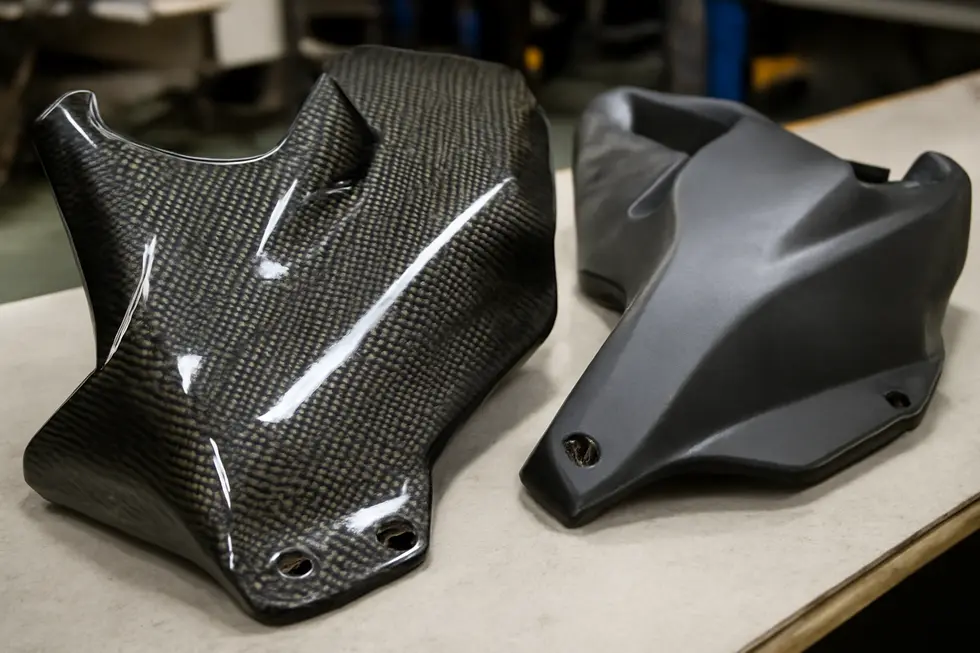
1. Balancing Strength and Flexibility: Carbon Fiber and ABS Plastic in Belly Fairings
Carbon fiber and ABS plastic stand as the primary materials shaping the performance and durability of motorcycle belly fairings, each offering unique benefits tailored to riding needs and budget constraints. Carbon fiber is renowned for its exceptional strength-to-weight ratio and rigidity. Made from woven carbon fibers embedded in epoxy resin, it undergoes advanced curing processes to achieve a lightweight yet remarkably stiff structure. This helps reduce the motorcycle’s total weight, sharpening handling and boosting speed. Its resistance to UV degradation and aging maintains the sleek appearance riders seek. However, the material’s brittleness makes it prone to cracking upon hard impacts, which confines its use mostly to high-performance or premium motorcycles where weight savings and strength are paramount. On the other hand, ABS plastic offers an appealing balance of flexibility, impact resistance, and cost-effectiveness. This thermoplastic polymer absorbs minor shocks without cracking, making it well-suited for standard or mid-range motorcycles where durability and affordability matter. Its capacity to withstand heat through integrated heat-shield technology ensures reliable performance near the engine zone. ABS manufacturing is simpler and more economical, enabling easier repairs and replacements. Some manufacturers smartly blend these materials, employing carbon fiber for critical aerodynamic sections to leverage its strength and lightness, while using ABS plastic in less stressed areas to keep costs balanced. This hybrid approach allows models to optimize both weight and resilience depending on their intended market. The strategic choice between carbon fiber and ABS plastic in belly fairing production directly influences both the motorcycle’s performance dynamics and rider experience. For further insights into related bodywork innovations and materials, explore the best motorcycle fairings at Summit Fairings.
Reference: Detailed examination of material properties and applications in high-performance motorcycle components [3][4][1].
2. Titanium Fasteners: Lightweight Strength Enhancing Belly Fairing Durability and Performance
Titanium fasteners have become an indispensable component in the material technology of belly fairings, combining advanced engineering with performance-enhancing benefits. Crafted from aircraft-grade Grade 5 titanium (6AL-4V), these fasteners offer a remarkable strength-to-weight ratio, being approximately 42% lighter than traditional steel while maintaining exceptional durability. This weight reduction is crucial for the lower body panels of motorcycles, where minimizing mass directly influences handling, acceleration, and fuel efficiency without sacrificing structural security.
Beyond their lightweight nature, titanium fasteners deliver outstanding corrosion resistance—a vital feature given their exposed position on belly fairings. This resilience preserves the aesthetic integrity and functional reliability of the fairings over time, especially when regularly subjected to environmental factors such as moisture, dirt, and road debris. Their ability to resist rust and degradation ensures that protective panels remain firmly secured, safeguarding critical engine components beneath.
Design considerations of these fasteners address both function and form. Features such as low-profile dome heads contribute to a streamlined, sleek appearance that seamlessly integrates with the motorcycle’s overall design. Rolled thread profiles enhance load distribution and fastening strength, reducing the risk of loosening from vibration during rides. Anodized finishes not only provide additional corrosion resistance but also enable subtle customization options to match or contrast with the bike’s color scheme and fairing style.
Compared to aluminum fasteners, titanium offers superior longevity and strength, making it the preferred choice for riders prioritizing premium performance and reliability. Its versatility is evident across various fairing parts, including belly pans, side panels, and nose cones, solidifying titanium fasteners as both a technical and aesthetic upgrade.
Integrating titanium fasteners into belly fairing assemblies exemplifies how material innovation supports advanced motorcycle design. They enhance the fairing’s protective and aerodynamic roles by maintaining secure fits and reducing weight, contributing to the overall refinement of the motorcycle’s dynamics.
For further exploration of high-quality fairing materials and upgrades, visit Explore the Best Motorcycle Fairings at Summit Fairings.
More details on these advanced fasteners are available from technical sources such as the Pro-Bolt Titanium Fairing Kit for Suzuki GSXR1000.
Chapter 4: Installation and Compatibility of Belly Fairing Motorcycle Components
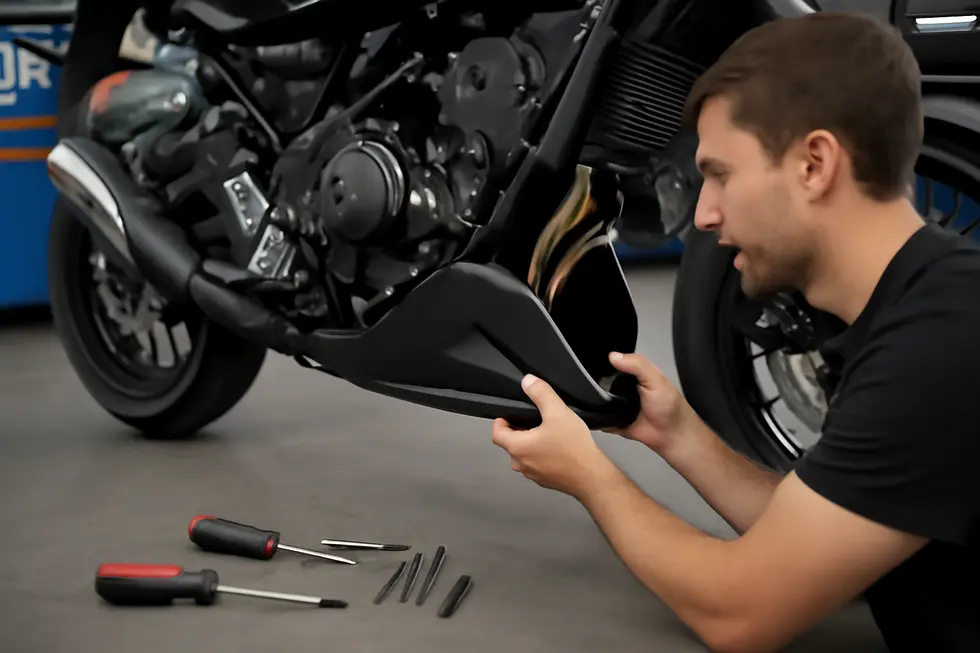
1. Seamless Integration: Step-by-Step Installation and Ensuring Hardware Compatibility for Belly Fairings
Installing a belly fairing on a motorcycle involves more than just attaching a panel; it requires precise alignment and compatibility with the bike’s unique framework to maintain performance and aesthetics. The process typically begins with removing the existing belly pan or lower panels by carefully unscrewing the designated bolts. It is essential to ensure the mounting surfaces are flat and solid, as this stability prevents vibrations and maintains the integrity of the fitment over time.
Belly fairings are engineered with model-specific contours and mounting points, allowing them to fit snugly without modification. This precision eliminates interference with other critical components such as exhausts, engine guards, or center stands. For instance, belly pans crafted for certain sportbike models accommodate aftermarket full exhaust systems seamlessly, preserving both functionality and style. The installation hardware—often supplied by the manufacturer—includes steel brackets, bushings, quick-release bolts, washers, and rubber plugs, all chosen to secure the fairing firmly while avoiding damage to the frame or engine parts.
Attention to hardware compatibility is crucial. Using the correct size screws, such as M8 x 90 bolts with self-locking nuts, ensures a secure and vibration-resistant assembly. Although most belly fairing kits come with detailed step-by-step instructions and all necessary fittings, riders without mechanical experience are advised to seek professional assistance to avoid installation errors that could jeopardize safety or component integrity.
This precise engineering and comprehensive hardware compatibility foster an efficient, straightforward installation process that enhances the motorcycle’s aerodynamics without sacrificing the reliability or accessibility of essential maintenance. Riders looking to upgrade can explore tailored options and detailed guides at trusted sources for motorcycle bodywork like Summit Fairings.
For more technical details and examples of model-specific installation kits, consult specialized resources on manufacturers’ sites to ensure your belly fairing upgrade is both effective and reliable.[2][5]
2. Ensuring Perfect Fit: Model-Specific Compatibility and Manufacturer Guidance for Belly Fairing Installation
The success of installing a belly fairing on a motorcycle hinges on strict model-specific compatibility and adherence to manufacturer guidelines. Belly fairings are precision-engineered components tailored to fit particular motorcycle models and production years, ensuring optimal aerodynamics, aesthetics, and safety without requiring any modifications. This targeted design guarantees a seamless integration that preserves the bike’s original performance characteristics.
Take, for instance, a carbon fiber racing belly pan crafted exclusively for a certain sportbike series within defined manufacturing years. Such a fairing is not only designed to bolt directly onto the frame but also factors in common aftermarket setups, like full exhaust systems, to provide a perfect fit. This eliminates guesswork and installation complications, allowing riders to upgrade confidently. Similarly, components designed for standard motorcycles demonstrate this approach by fitting securely with their respective models, minimizing installation time and avoiding potential damage from improper fitting.
Manufacturer installation guides are indispensable during this process, detailing each step clearly—from removing old panels and prepping new parts, which may include painting, to the precise torquing of bolts and securing connectors. Following these instructions ensures not only that the belly fairing maintains its aerodynamic function but also that electrical systems remain intact and unaffected. This careful guidance guarantees durability and the continued reliability of the motorcycle.
Crucially, compatibility does not cross brands or different model lines within the same manufacturer. Using parts made exclusively for a specific motorcycle model and year ensures adherence to original engineering standards, preserving warranty conditions and overall structural integrity. Ignoring these compatibility protocols may result in poor fit, compromised safety, and even mechanical issues.
For riders looking to upgrade while maintaining factory-quality performance and appearance, respecting model-specific compatibility and thoroughly consulting manufacturer instructions is essential. More insights on choosing the right motorcycle fairings and accessories can be found through dedicated resources such as explore the best motorcycle fairings at Summit Fairings.
Reference: Genuine Carbon Fiber Racing Belly Pan for Yamaha YZF R1/R1M 2020-2024
Chapter 5: Commercial Examples and Model Specifics of Belly Fairing Motorcycles
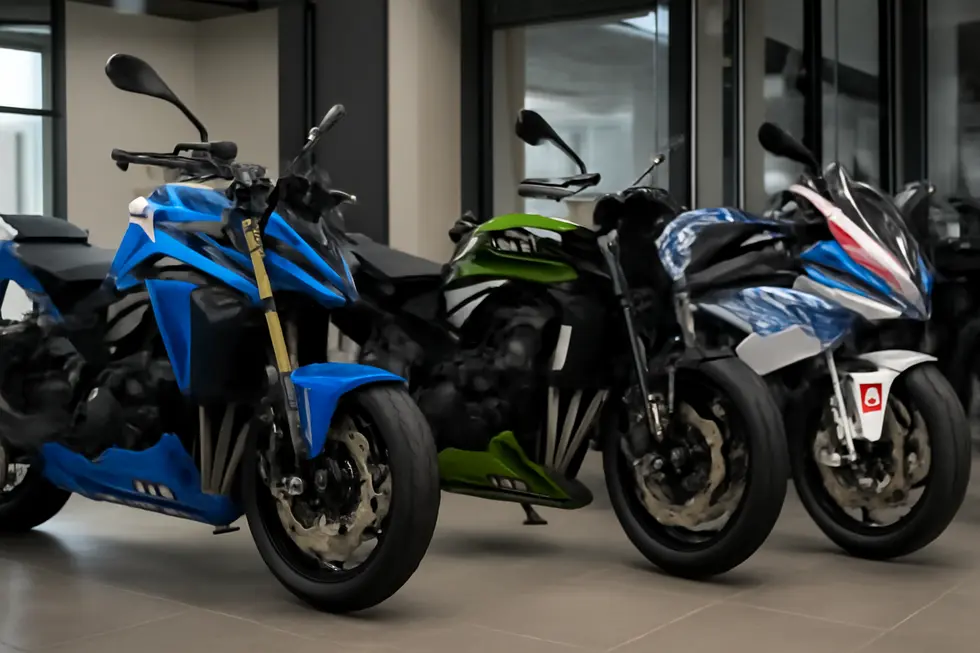
1. Cutting-Edge Designs and Engineering Highlights in Belly Fairing Motorcycles
Commercial motorcycles employing belly fairings demonstrate a sophisticated blend of aerodynamic innovation and tailored engineering aimed at enhancing both form and function. A prime example is the 2017 Ducati Diavel Dark Stealth, whose belly fairing doubles as an oil cooler housing, sculpted to define a muscular profile while optimizing airflow. Its engine, featuring Ducati’s Testastretta 11° Dual Spark technology, incorporates a reduced valve overlap that minimizes exhaust gas interference, significantly improving combustion efficiency and emissions. Combining twin spark plugs per chamber and targeted injectors at intake valves, this setup promotes rapid combustion for smoother power delivery suited for street use.
Similarly, the BMW M 1000 R integrates aerodynamic wings into its front bodywork to generate greater downforce and maintain stability at high speeds. Beneath these surfaces lies a potent 999cc engine that delivers around 210bhp, complemented by advanced electronics. Multiple riding modes adjust throttle response, traction control, and ABS, with some variations including engine braking control, offering riders precise adaptability to road conditions and riding styles. To further refine performance, aftermarket carbon fiber belly fairings and body kits, such as those designed for the BMW S1000RR, reduce weight and drag without sacrificing structural strength.
On the conceptual front, digital designs like Oberdan Bezzi’s Honda Hawk 11 envision track-focused belly pans that streamline airflow beneath the bike while eliminating extraneous elements for a pure, racing-inspired silhouette. These show how aerodynamic management is central not only to performance but also to aesthetic expression.
Together, these examples illustrate how belly fairings transcend simple protective panels. They merge cooling efficiency, aerodynamic refinement, material innovation, and electronic integration specific to each model. This fusion of design and technology enhances motorcycle performance and showcases the evolving role of belly fairings in contemporary motorcycle engineering.
For more insights on fairing innovations, see our comprehensive exploration of motorcycle fairings.
Reference: BMW M1000R specs & tech [2].
2. Balancing Performance and Market Value: Economic and Racing Roles of Belly Fairings
Belly fairings play a pivotal role in both the commercial motorcycle market and racing environments by merging functional performance with economic value. From an economic perspective, these lower body panels serve as desirable aftermarket upgrades that enhance a motorcycle’s aggressive styling and durability. Materials like ABS plastic are commonly employed for models focused on rider customization, providing UV resistance and impact protection that appeal to consumers. This combination of practical defense and visual enhancement increases a motorcycle’s market appeal and resale potential, fueling niche segments within motorcycle accessories.
In the racing arena, belly fairings are engineered with precision to optimize aerodynamics and cooling efficiency—key factors that influence lap times and engine reliability. High-performance motorcycles often integrate belly fairings with cooling systems such as oil coolers and radiators, carefully sculpted to channel airflow around the engine. This dual function reduces aerodynamic drag while maintaining optimal engine temperatures under strenuous conditions, directly improving speed and stability at high velocity.
Different models showcase these distinct applications. For example, a sport-oriented bike may feature a belly fairing meticulously designed to enhance both aero efficiency and engine cooling, reinforcing its competitive edge on the track. In contrast, cruisers or custom bikes benefit more from belly pans that emphasize ruggedness and style, offering riders an accessible upgrade without compromising protection.
Thus, belly fairings bridge the gap between aesthetic customization and technical performance. They contribute to enhancing rider satisfaction and motorcycle longevity, whether through race-inspired precision or aftermarket versatility. This balance supports a thriving economic ecosystem around belly fairings, reflecting their growing importance beyond mere visual flair.
Explore more on how these components influence overall motorcycle performance and style at Summit Fairings.
For a detailed examination of racing designs incorporating belly fairings and integrated cooling, see insights on performance-focused motorcycles.
Chapter 6: Aesthetic and Styling Considerations for Belly Fairing Motorcycles
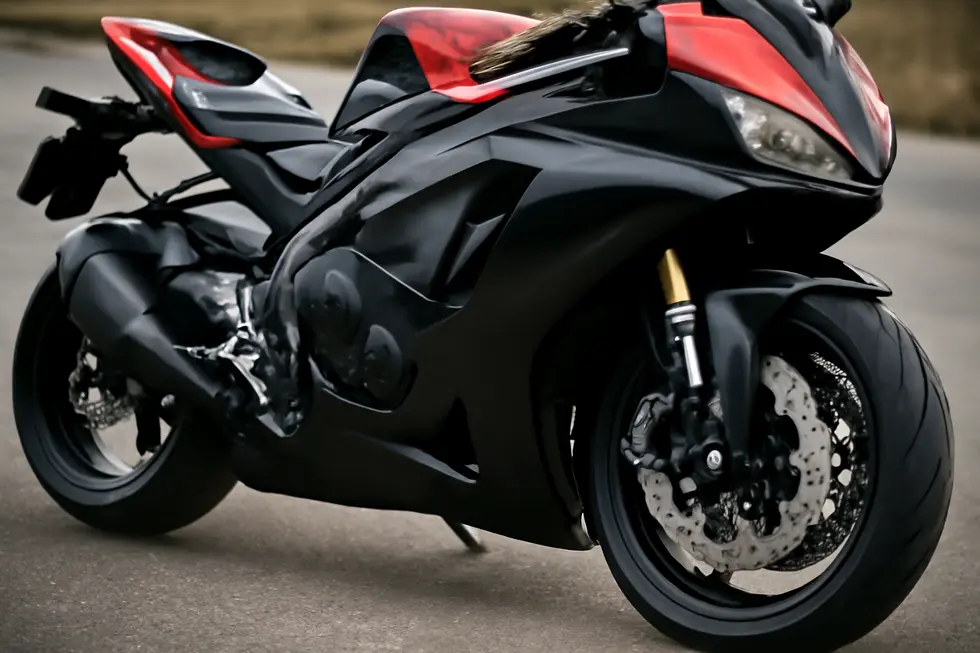
1. Crafting Speed and Style: How Belly Fairings Enhance Aerodynamics and Performance Aesthetics
Belly fairings serve as a vital design element that seamlessly blends aerodynamic efficiency with compelling performance styling. Positioned beneath the engine, these panels manage airflow to reduce drag, which improves stability and fuel efficiency at higher speeds. This aerodynamic refinement is especially crucial for sport and racing motorcycles, where every detail contributes to enhanced handling and speed.
Beyond their functional purpose, belly fairings bring a distinctive visual appeal that underscores a motorcycle’s aggressive and sporty character. The low-mounted fairing establishes a sleek, streamlined profile that complements upper bodywork without obscuring key mechanical components. This balance between form and function helps the motorcycle maintain a purposeful race-inspired appearance while delivering tangible performance benefits.
Protecting the engine’s vulnerable underside from road debris and minor impacts is another important role. This defensive aspect supports long-term durability without compromising on aesthetics, allowing riders to enjoy improved reliability alongside a polished look. The design of belly fairings is often bike-specific, ensuring a flawless fit that preserves the harmony of the overall silhouette and aerodynamic intent.
When integrated properly, belly fairings contribute to a motorcycle’s identity, reinforcing its performance credentials through both visual cues and functional enhancements. For riders seeking to combine enhanced handling with a compelling, aggressive appearance, these fairings offer an accessible upgrade that elevates the riding experience on multiple levels.
Explore more about motorcycle fairing styles and choices in the Explore the Best Motorcycle Fairings at Summit Fairings blog.
2. The Art of Material Selection and Customization in Belly Fairing Motorcycle Styling
When it comes to enhancing the visual appeal and performance of motorcycles equipped with belly fairings, material choice and customization play a pivotal role. Carbon fiber stands out as the premier material for belly pans due to its exceptional strength-to-weight ratio and sleek finish. Riders can choose from different weave patterns like twill, known for its distinctive diagonal texture, or plain weaves, each imparting unique visual character. Finishes vary too, with options ranging from glossy, which offers a polished, reflective surface, to matte, lending a stealthy and understated aesthetic. These choices allow motorcycle enthusiasts to tailor their bike’s lower bodywork to subtle or bold visual statements, marrying functionality with style.
Aluminum presents a compelling alternative, particularly for fasteners and trim components, providing a lightweight yet durable metallic accent. Precision anodizing in colors such as black, blue, or gold enables riders to introduce vibrant, corrosion-resistant highlights to their belly fairing assemblies. This not only reduces overall weight but enhances the bike’s bespoke look with sleek, low-profile hardware that integrates seamlessly.
Customization extends beyond materials into design influences, with many riders opting for racing-inspired bodywork. These race-style kits accentuate aerodynamic lines and aggressive contours, emphasizing performance as much as aesthetics. Supporting accessories like seat cowls and tank pads further complement the bike’s profile, contributing both protection and sporty flair.
Together, the flexible interplay of material selection and custom finishing transforms belly fairings into a personal expression of speed, style, and sophistication. The combination of carbon fiber’s modern elegance and aluminum’s colorful edge offers endless possibilities to elevate a motorcycle’s curb appeal while enhancing its road presence. For riders exploring tailored fairing options, resources such as explore summit fairings, your go-to destination for motorcycle fairings provide a wealth of inspiration and products to match individual tastes and performance needs.
Final thoughts
Belly fairings represent a convergence of function and form critical to modern motorcycle design and aftermarket innovation. By enhancing aerodynamics, they contribute directly to improved speed, stability, and rider control. Their protective roles safeguard expensive engine components from everyday hazards, ensuring long-term reliability. Advances in material technology, particularly with carbon fiber, allow for lightweight yet highly durable options that maintain heat resistance in challenging conditions. The straightforward installation and widespread compatibility make belly fairings accessible upgrades for customers, expanding market potential. Commercial product examples demonstrate how manufacturers tailor designs for specific models, validating their demand and performance benefits. Finally, the visual integration of belly fairings elevates motorcycle aesthetics, boosting consumer appeal. For business owners, these combined advantages underscore the value of including belly fairings in product lines or service offerings as a strategic investment that merges practical benefits with stylistic enhancement.
Ready to elevate your ride? Summit Fairings delivers premium, custom-fit fairings that blend style and durability. Whether you’re chasing speed or turning heads, we’ve got your bike covered. Don’t wait—transform your machine today. Click, customize, and ride with confidence. Your perfect fairing is just a few clicks away. Act now!
About us
undefined
RELATED POSTS
View all

